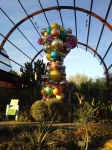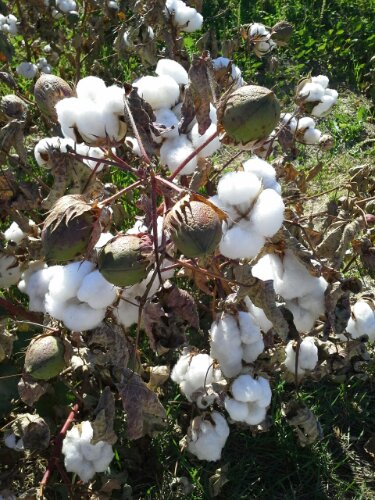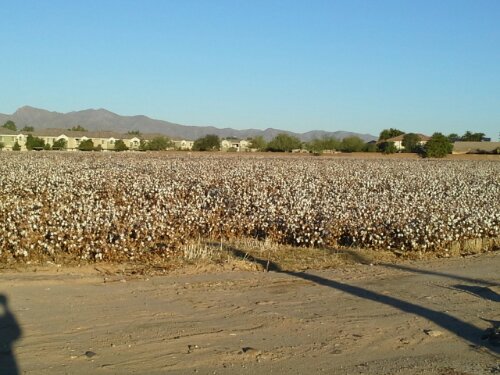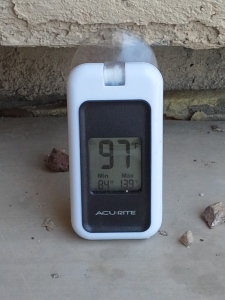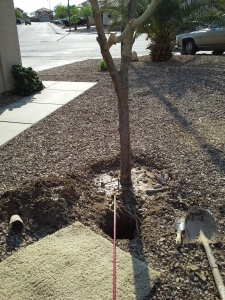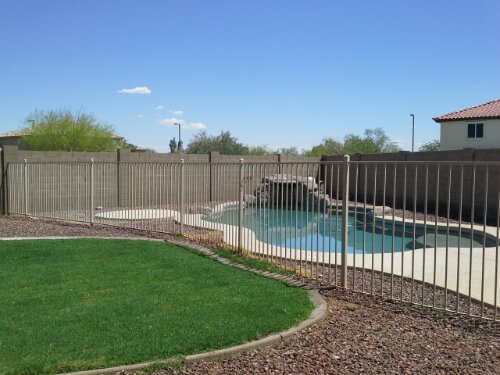I must admit that when I moved to the Phoenix area, it never occurred to me that I’d have the chance to see a major exhibit of a Northwestern artist’s work like back home. And yet, Dale Chihuly has partnered with the Desert Botanical Garden of Phoenix to bring his brilliant works to the Valley of the Sun. Set among the thousands of types of cacti, succulents, trees, and scrub are twenty some different installations. This is his second exhibition at the DBG; his first was back in 2008 and was called “The Nature of Glass. ” Given the myriad ways solid plant forms, translucent glass and light interact in the three dimensions, mere pictures cannot convey all there is to see, if one is able to see the works in person and at different times of day. But I wanted to give my friends a look at the surprising beauty of these very different worlds. If I am able to go back for a night visit and take shots worth posting, I may do a follow up, and if you can see it in person, definitely do so, but for now, here’s a look at the Desert Botanical Garden’s “Chihuly in the Garden” (November 10, 2013 – May 18, 2014).
- Desert Towers (2008)
- Sapphire Star (2010)
- Blue Fiori Sun (2013)
- Citron and Yellow Fiori (2013)
- Citron and Yellow Fiori (2013)
- Octopus Cactus and little Agave plants
- Left to right, Asymetrical Scarlet Tower and Asymetrical Yellow Tower (2005)
- Red Reeds (2013)
- Prickly Pears and a young, armless saguaro among the Red Reeds installation
- A great mix of shapes, plants and glass
- Neodymium Reeds(2013)
- Black Niijima Floats (2013)
- Yellow Herons (2007)
- Massive Cardon cacti from New Mexico, dwarfing the nearby building
- Summer Sun (2010)
- A Roadrunner looking for crumbs at the Patio Cafe
- Jade and Crimson Thorns (2013)
- Bobbi among the clumps of Organ Pipe Cactus
- Papago Buttes about a half mile (kilometer) away
- Located on the Garden Butte, the 26 panels of Desert Neon (2013) light up at night in bright yellow, red, green and orange shapes
- Black and White Reeds and Fiori (2013)
- Black and White Reeds (2013) among the creosote bush and cactus, Papago Buttes in the distance
- Scarlet and Yellow Icicle Tower (2013)
- Blue Crystals and the bow of Sonoran Boat (both 2013)
- Sonoran Boat (2013)
- White Belugas (2013) is set amidst what looks at first glance to be driftwood, but which is in fact the skeletal remains of saguaros
- Olive Reeds (2013) and a young saguaro
- A nice little seating area with a small fountain
- Yellow Reeds (2013) as the sun nears the horizon
- Yellow Reeds (2013)
- Cattails (2013) and Pickly Pear cactus and yuccas
- Cattails (2013) set among yuccas and agave
- Multicolored Polyvitro Chandelier and Tower (both 2005)
- White Tower (1997)
- Erbium Pink Fiori (2013) near, White Tower (1997) far
- Totem Pole Cactus
- Creeping Devil
- Sapphire Star at sunset
- Leaving at sunset, the Desert Towers (2008) are now lit by spot lights
































